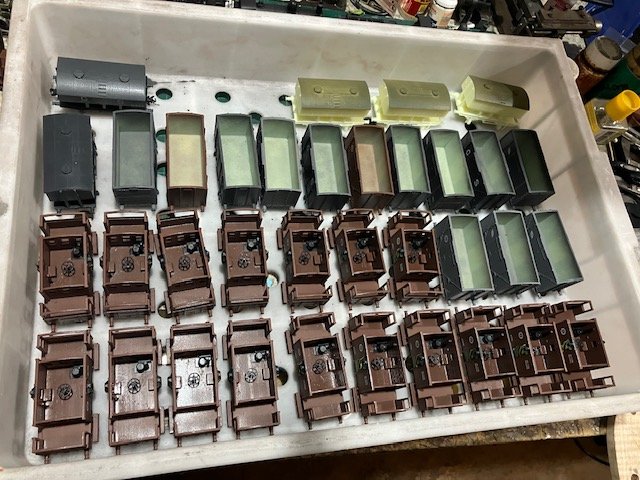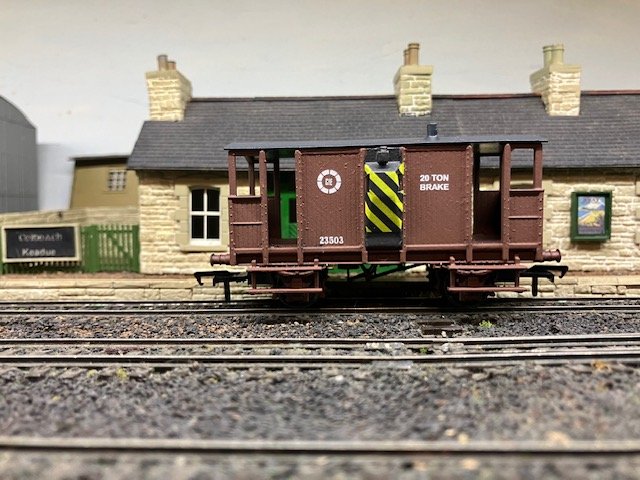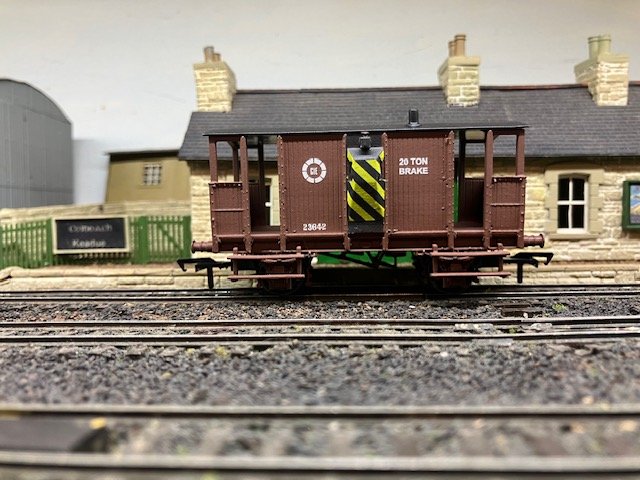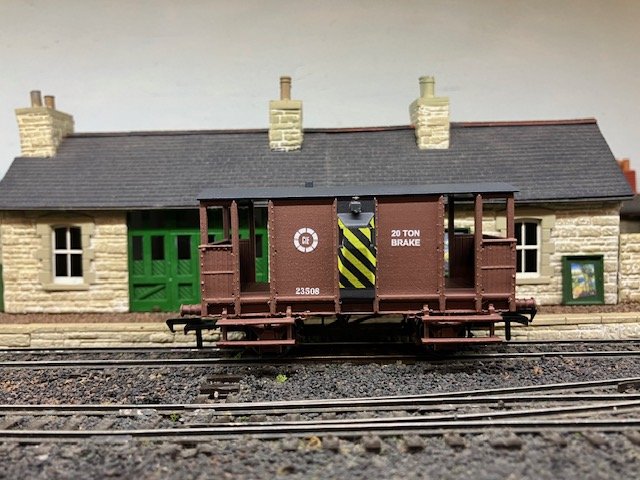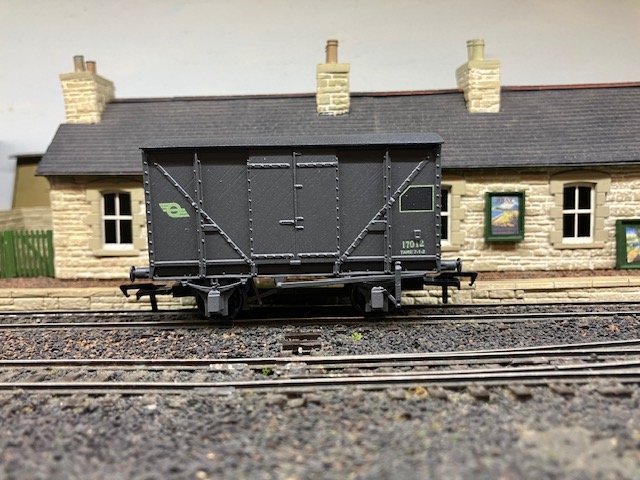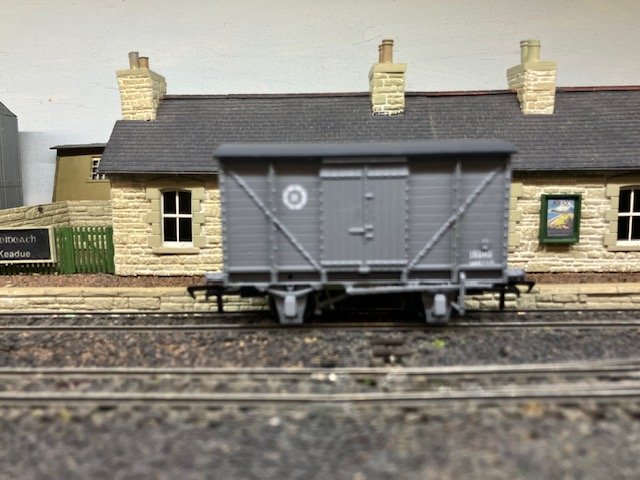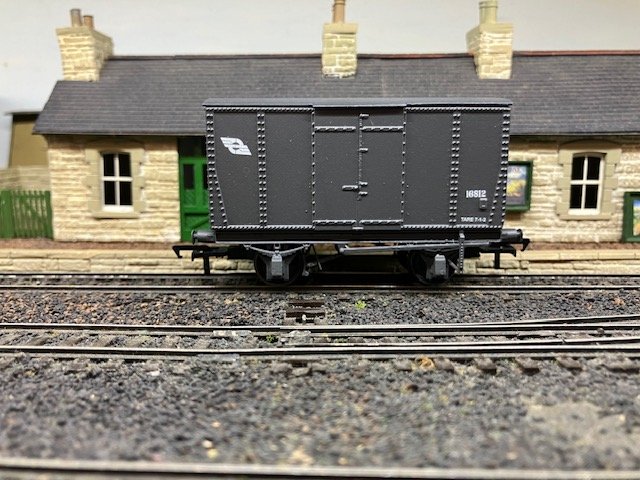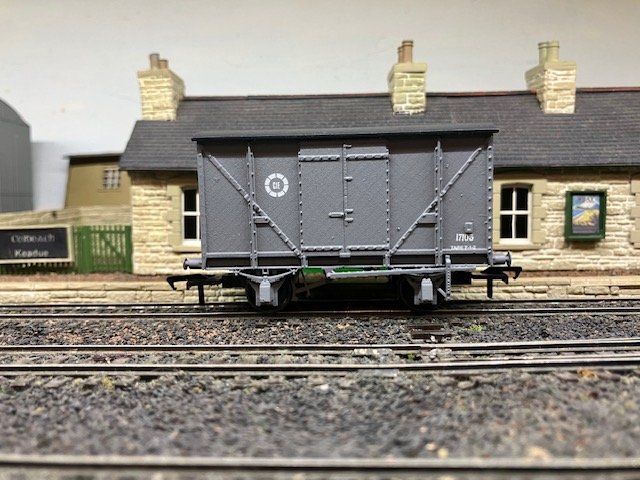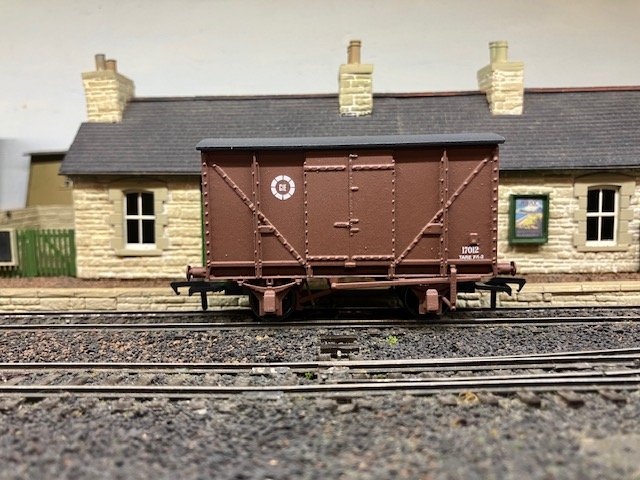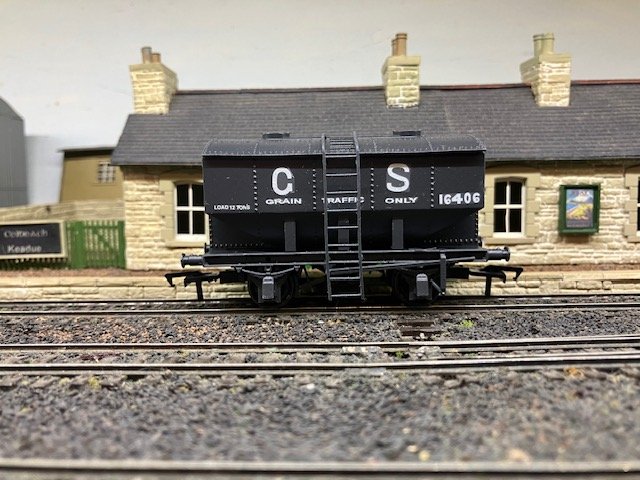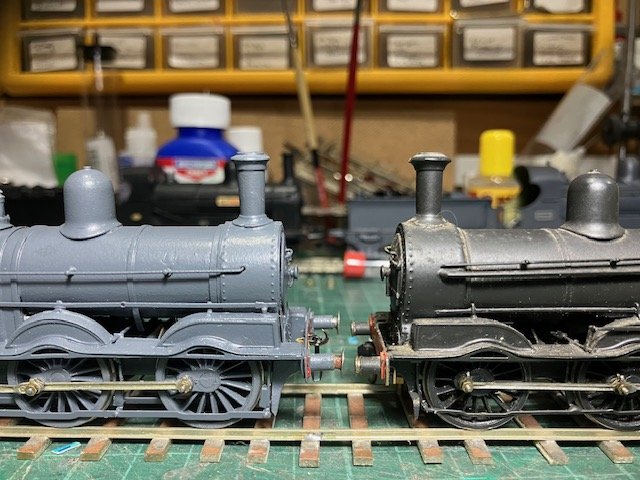-
Posts
4,879 -
Joined
-
Last visited
-
Days Won
119
Content Type
Profiles
Forums
Events
Gallery
Everything posted by Mayner
-

Limerick to Foynes railway reopening plan
Mayner replied to spudfan's topic in What's happening on the network?
Spent some time exploring the railways and time with friends in the county when I lived in the "Home Counties" during my misspent 30s. Rural and quite sparsely populated away from the industrial centers on the Nene Valley and its tributaries the county once had an extensive railway system mainly as a result of competition between the Great Western, LNWR, Midland and Great Central for traffic between London and the Midland cities. Apart from the Great Central "London Extension" which ran through an entirely rural part of the County and closed under the Beeching Axe of the 60s the remaining trunk routes that run through the county WCML & Northampton Loop Line, Midland Main Line and Chiltern London-Birmingham route and probably busier than ever and passenger services restored to the Kettering-Corby branch closed in 1966. While 4 of the stations serve large centers (Cities by Irish standards) Northampton (243k) Wellingborough (54K) Kettering (57k) Corby (62K) the remaining two stations serve small towns/villages by comparison and are seved by slow/stopping services only Long Buckby ,4K Northampton Loop Line, Kings Sutton 2.3K. Interestingly a workmate from Daventry 27K (one of largest towns in England without a rail station) used to commute by train from Northampton to Watford rather than from Long Buckby (nearest station) as he could use a quicker non-stop service despite a longer drive. Northamptonshire lost most of its traditional industries (iron and steel and shoe manufacture) by the 1980s passenger traffic is mainly London commuting, while the Daventry International Freight Terminal became one of the first of the current generation of independently owned/operated "Inland Ports" https://en.wikipedia.org/wiki/Daventry_International_Rail_Freight_Terminal -

Mark 1 Suburban Coaches Formations guide
Mayner replied to Warbonnet's topic in British Outline Modelling
Famously Class 31 hauled London suburban and outer services out of Kings Cross and Moorgate to destinations in Herts and Cambridge from the 60s until the services was electrified from the mid 70s onwards. Slam Door Compartment and High Density stock seemed to be popular with both passengers and operating staff for London (and Biirmingham) suburban/outer suburban services until replaced with MK3 stock although Mersey Side and the North East had graduated to "modern" sliding door saloon electric stock from the 1920s onwards. Routes, motive power and train formations detailed in Warbonnet's original post. -
A small number of RTR Brakes and covered wagons are now available on the website https://jmdesignmodelrailways.com/. The website is no longer capable of accepting on-line orders from customers outside of Ireland and the UK as a result of changes to the conditions of the businesses Shopify Plan. Customers outside outside of Ireland or the UK interested in placing an order can contact me by e-mail info@jmdesignmr.co.nz.
-
Guinness Group (Harp Larger) was one of the main users (promoters?) of the Executive Train regularly used to transport drinks industry VIPs and staff to visit the Harp Larger brewry in Dundalk. At the time a cousin was a bar manager in Dublin and a trip to Dundalk on the Executive Train along possibly with golf outings was considered on e of the perks of the job. The Executive Train was on display on the Saturday of the Inchacore 150 event before leaving on an afternoon charter.
-
Probaby a hang over from the old clann system more than a few places in Ireland where the locals consider it no business of Merrion St or Westminister what goes on in the area controlled by their 'people". I ran into that culture when I visited Kenmare 'on Official Business" while working for an Inspector with the Health and Safety Authority investigating a complaint about safety on a construction site. Asking at the Post Office for directions to a townland the postmaster asked "Ar-u-from Tralee?" he looked positively shocked when I told him I had been sent from Dublin "it must be something very serious". I hadn't the heart to tell him I was just 'flying the colours" investigating construction complaints in the Kingdom and hadn't been sent specially to his Town. Donal Foley in his Irish Times 'Man bites Dog' column of the 1970s described Crossmaglen as a self governing Canton, I worked in Dublin in the early 2000s for as a Site Foreman for a construction company from the Cross the workers from South Armagh only showed respect for one man (ignoring all the layers of management) the company founder and managing director whom they basically considered the chief. Interestingly I had a similar experience in a similar role after I moved to New Zealand in 2004 in this case some long serving Maaori line managers only who showed respect for the Pakeha (European) company founder and director.
-
I am currently completing our last run of RTR wagons and expect to begin fulfilling orders in mid-October. Once I fulfill existing orders a small number of wagons will be available for sale on the website. https://jmdesignmodelrailways.com/ Decorated wagons awaiting final assembly. Our most popular model 23508 rebuilt version of van with steel duckets, ply bodies cabin and planked balconies a real hybrid! GSWR Covered Wagon introduced 1915 a few lasted in revenue service into the eraly 70s, formed the basis of the CIE 'H Vans" (Hard Topped) CIE "1946" verison of Covered Wagon in as introduced condition dark grey with green snail and numerals. These were CIEs 1st version of the H Van featuring aluminium sheeting on a timber planked body on a 10' wb version of the 'Standard Irish" wagon underframe. LMA wagon. CIE built a handful (11) of these "Light Metal Alloy" wagons in the late 40s-early 50s. 16812 is the last in the number series of 15147-16812 series vans built by the GSWR-GSR-CIE from 1915 onwards. Light grey and brown versions of the "1946" vans, some vans remained in gery with snail logo until scrapping in the early 1980s. A few for myself GSR Bulk Grain wagon unfortunately difficult to disguise the decal film. A pair of vans with GS markings, I need to produce some sets of GSR wagon numbers and wagon markings.
-

Rapido Launch "Evolution" Range of 48 Foot Generic Bogie Coaches
Mayner replied to DJ Dangerous's topic in News
A modeller could always follow the Tim Cramer's example of converting a Triang-Hornby/Hornby Clerestory coach into a 45' GSWR arc roofed coach by fitting a plasticard arc roof, fitting new (flat ends) and interior partitions. One currently listed on e-bay at £7.00 bit easier on the pocket than carving up an Evolution coach at almost £70.00. Tims ex-GSWR coach was was featured in a Railway Modeller "Irish Miscellanery" artice possible May 1972 along with 4mm 21mm gauge scratch built models of No 90, a Bandon Tank and a J26. Tim's coach was basically a scratchbuilt plasticard model with Triang Clerestory sides, a lsee extensive re-build could be achieved by replacing the clerestory roof with a plasticard arc roof and fitting the distinctive roof vents/lamps supplied with SSM GSWR 6w coach kits. -
Station remained open for goods (Polloxfens mills) and as a crossing place until mid -70s after closing for passenger traffic 63/64. Buildings were reasonably intact when I checked out the station about 40 years ago interestingly remains (chassis) of derlict road vehicles possibly school buses in the yard. CIE may have used the station as a base for railhead delivery and school bus services after passenger traffic ceased.
-
In this part of the World Government has instructed Transit New Zealand our equivalent of the NTA to focus on roads and motorways away from (public transport/cycleways/greenways which were favoured by the last centre left government) so not a lot different to the NTA. The sting in the tail is that its planned to introduce a 'User Pays" system to charge road users which is likely to be more expensive than current fuel exise and road taxes. The cost of setting up and operating the 5year trial Hamilton-Auckland commuter service was substantial although no significant mechanical or civil engineering works were required. €35m to refurbish two train sets and two new stations (single platform w car park) and €17m subsidy intiially 70% supported by our equivalent of NTA. At this stage councils have to make a decision whether to fully fund the service or increase fares in an attempt to make up the shortfall if Transit reduces or withdraws funding at the end of the 5 year trial period. The train service is likely to cost the local ratepayers €1.7m annually if Transit continues funding at 51% at the end of the trial period the rate of support to other regional commuter rail services in New Zealand. Setting up and subsidising a commuter service between Navan and Drogheda is highly likely to be more expensive than a commuter bus service and cost the tax payers money.
-
Is there anything to stop Meath County Council and the two town councils to fund a Navan-Drogheda train service in the same manner as regional, town and city councils fund local train and bus services in many countries. In Hamilton where I live the daily commuter service to Auckland is part funded by the Councils and our equivalent of the NTA. In our city 100,000 population each property (house and business premises) is charged (Rates) €40.00 annually for the benefit of the commuter train and €129 local bus services. The majority of councilors on both the Regional and City Council voted in favour of funding a rail service despite strong idealogical opposition from those that take a centre right stance. In the Uk a number of passenger trains services reinstated during the 80s-90s were initailly operated on a trial basis by BR using temporary platforms constructed from scaffold with the council underwritinng BRs losses establishing and operating the service. The fact that Galway and Cork Corporations are part funding rail improvements in their regions (Oranmore station and dynamic loop, Cork suburban rail upgrades) indicates that there is nothing to stop councils getting involved in funding rail projects provided the local electorate are prepared to subsidise these services by paying higher rates.
-
The same feeding frenzy Panic at Missing Out appears to develop each time a new Irish RTR model is released on the market. I am not (yet) panicing although i have not received my order of Bulleid Opens or received an order update since paying for them along with a Park Royal coach almost immediately after I received the invoice over 6 months ago. Hopefully my Park Royal and Bulleid wagons may arrive at some stage during the next 12 months. At this stage I would ignore the bullshit about Brexit creating a nightmare for UK businesses exporting outside the EU. A large part of Rails business involves exporting British outline models to customers in North America, Australasia with plenty of experience in completing customs declarations. Based in New Zealand Rails have been my preferred UK supplier for the past 20 years for rtr items and Peco track/points as they are difficult to match on price delivery and service, my MM 1st batch of B141-181 were supplied by Rails, suppose I had a soft spot for visiting the shop in Sheffield while living in and visiting the UK Rails Customs Declarations/Commerical invoices for international orders are likely to be generated electronically using software similar to that used by businesses in most countries that ship internationally. Although operating on a minute scale compared to Rails my businesses customs declarations are generated electronically (including the correct EU/Irish customs codes) on software provided by the Postal Service & DHL. No doubt Royal Mail and British based courier businesses have similar capabilities. Its possible to supply goods from outside of the EU to Irish (& EU) customers tax paid, but it works out a lot more expensive to the customer than simply paying the import Vat and the An Post/couriers processing fee upon arrival, its simply not worth bothering! Now in my mid- late 60s I decided to call it a day on ordering new RTR releases as we have basically run out of storage space. Rtr models bought during the last 10 years in boxes in the garage, older models in display cases, little time likely to available for modelling during the next few years, best laid plans of mice and men etc.
-
Although not rostered as 'branch loco" main line locos were sometimes rostered to work branch line trains between turns on main line duties. For instance the A Class of North Wall-Dundalk goods trains worked the Dundalk-Carrickmacross goods, locos of Mallow-Tralee goods trains also worked the Tralee Castleisland and Listowel goods. Seems to have been a similar arrangement between Castletown West and Dugort Harbour Its rumored* that for a short while following their introduction B121s (in grey) worked Galway-Tuam passenger trains between turns on main line duties and (even turned the loco steam loco fashion to run bonnet forward like some US railroads) (*It may have been Jack Kennedy prominent enthusiast and photographer owner of Green Studios. I occassionally would drop into his studio where he was usually happy to talk about trains and give me some photos of steam and diesel locos.) Its just about possible that the loco of the 'Night Mail" or an overnight goods would have been available during the day time to work Galway-Tuam trains and carry out shunting duties at Galway.
-

Rapido Launch "Evolution" Range of 48 Foot Generic Bogie Coaches
Mayner replied to DJ Dangerous's topic in News
Reminds me of the joke among American modellers during the 60/70s about converting a (very expensive) Brass Shay into a (cheap) plastic diesel. It was one thing to convert the relatively chaeap basic plastic rtr models of the pre-2000 era into representations of Irish stock but Rapido coaches appear to be expensive highly detailed models. It was only modellers like E H Francis that turned out 4mm coaches with fully detailed interiors which included fine details such as mirrors and publicity photos in the individual compartments. The elliptical roofed coaches are similar in roof outline to MGWR limited mail stock of the 1900, but the MGWR coaches were 6' longer corridor vehicles not non-corridor compartment stock. Scratchbuilding in plastciard using methods detailed by David Jenkinson in "Carriage Modelling made easy" is probably the best approach for modelling pre-50s era coaching stock. -
The "English' language has been evolving and has continued to spread around the World since the first Germanic raiders/traders/invaders arrived in Britain all those years ago, I dont't think the people who helped spread the language around the World through trade and invasion would have been the least worried about the finer points of grammer. The majority of English speaking countries have developed their own regional variations of the language be it Hiberno-Irish, Scots, Ulster Scots, Canadian, US, Australian and New Zealand versions of the language which are just about intelligible to each other. One of my favourite writers is Andrew Marlon an Australian cartoonist who publishes his distinct take on all thats going wrong in the World in his First Dog on the Moon Guardian column, some of whoes characters frequently the adjective 'irregardless" most likely to poke fun at those that become agitated by the use of the word. https://www.theguardian.com/profile/first-dog-on-the-moon . Interestingly while "irregardless" is recognised as a word (Oxford, Cambridge, McMillian, MacQuarrie and Miriam Webster dictionaries the American dictionaries consisers irregardless as a British English word and not a standard American English Word. MacQuarrie (Australian) defines irregardless as a word that not generally accepted as 'Standard English". I spent a lot of time during my first year in New Zealand tut-tutting and correcting local words and phrases into what I thought was 'correct English before copping on to myself and speaking the same lanugage as everyone else. Like any living thing a language has to continually evolve or die!
-
Horsetans comment about not being able to unsee something once noticed, I simply had to check the wheels on my J15s assembled using a mixture of Sharman and Gibson wheels with interesting results. Loco on the left Gibson (EM profile) on right Sharman (B profile) both pin in line 16 spoke. The brake gear on the loco on the left is from my own etchings, I used the original kit parts on the loco on the right. I picked up the loco on the left part built at a show in the UK with several parts missing from the fret including brake gear and guard irons/cosmetic front frames. When checked with a callipers Gibson wheels measured uniformally 19.80mm over tyres Sharman ranged between 19.3-19.8 Close 'enough" for J15 (5'1¼) driving wheel with worn tyres especially with OO or EM wheel profile with overscale flanges and tyre width and compromise wheel profile. While there are several photos of J15s with pins between (PB)spokes including a gruesome photo of 242 being cut https://transportsofdelight.smugmug.com/RAILWAYS/IRISH-RAILWAYS/CORAS-IOMPAIR-EIREANN-STEAM/i-hJTs5JS/A There are also photos of J15s with what appear to be pins in line including 161 https://transportsofdelight.smugmug.com/RAILWAYS/IRISH-RAILWAYS/CORAS-IOMPAIR-EIREANN-STEAM/i-QZrqpFD/A and 176 (GSR Locos McMahon & Clements) I am in a similar dilema the HT whether to use some 5'2"½ (20.8mm) dia PB wheel sets I have in stock (bought from SSM) to motorise a pair of J15s currently in the workshop. I guess the questions is whether the larger wheels raising the locos 0.4mm will be noticeable enough to stand out like a sore thumb alongside another J15, most of my locos either end up in a display cabinet or stored long term in a box so in a way doesn't really matter one I get some enjoyment out of the build.
-
As the father of a 14 year society is not likely to be a lot different than its always been the continued struggle for survival facing lifes ups and downs. The majority of my childs friends/class mates are good kids from supportive families likely to grow into responsible function adults, a few manipulative and troublesome ones from disfunctional families, none could be considered to be from an economically deprived background. The worrying thing is the explosion in mental health problems among adolesents and young adults in recent years, a number of our kids friends and class mates in New Zealand are also receiving treatment for mental health problems along with teen-young adult relatives in the States and New Zealand. Growing up in the 60s we had the existential threat of the Bomb and Vietnam War (topic of conversation among grown-ups at family get togethers) but wern't otherwise facing an insecure future my father and uncles all had steady well paid jobs in the days before the Irish economic recessions of the 80s & 90s or serious worries about pollution of climate change. One of the biggest problems at the moment is that political parties have to appeal to the older more conservative sector of the electorate to get elected often offering simplistic solutions to complex problems like crime, and responding to climate change. 'Talking tough" on crime and people on welfare, rather than tackling the causes of crime and long term welfare dependency. Failing to consider the effects of climate change in infrastructure planning despite repeated problems with flooding in low lying inland and coastal areas during the past 20 years. Unfortunately todays younger generation are likely to have lost their idealism and hope by the time they reach middle age just like 'My Generation!!!!!!!! Going back to Horsetans comment about Ireland's proud tradition of vandalism or perhaps a contempt for authority. One of the best examples when the 'locals" completly dismantled some DSER coaches following a deliberate de-railment during the Civil War. The Coaches with the possible exception of the heavier elements of the ironwork had completly gone by the time it was safe to recover the remains of the train. Possibly a case of the locals liberating the material for their own use rather than mindless destruction.
-

tralee dingle hunslet John Campbell 16mm live steam locos
Mayner replied to Jamie Davis's topic in Irish Models
Alan O'Rourke of New Irish Lines may have information on John Campbell "Halfinchacore Works" There is a photo of T&D No6 in Nov 2011 New Irish Lines. He also produced models of the LLSR 4-8-0 and 4-8-4T At the time I attempted to order a T&D 2-6-0T from John Campbell but he was not prepared to ship outside the UK and Ireland I think the locos and stock were 15mm scale on 45mm gauge track which is correct for the Irish 3' gauge. Accuracraft announced a 15mm scale gas fired live steam model of a C&L 4-4-0T aboyut 6 years ago, but never seems to have reached the production stage. https://www.accucraft.uk.com/products/kathleen-lady-edith-cavan-leitrim-4-4-0t/ Best option to locate one of John Campbells Irish locos would be to reach out to Garden Railway specialist retailers and enthusiasts groups in the UK -
The one thing that get me about this thread is that while there is plenty of talk about punishing the teenage perpetrator apart from myself no one has mentioned parental responsibility and potentially holding the parents of the teenager to account. In this part of the world a young person under 18 is still classed as a child. There is an oldsaying that the dog you own is the pup that you reared, what were the parents doing to monitor the childs behavior, the company he was keeping in the months, weeks days leading up to the vandalism at Downpatrick.
-
Ernie Shepherd's MGWR book ( & company records in IRRS Archives) are likely to be a more reliable source than Google. Born and bred in working class area of Dublin in the 50s and 60s we tended pronounce C... as Keltic , One of my friends got into hassle in school for spelling his first name Kieran as he and his family pronounced it rather than Ciaran as the Head expected, as far as we were concerned Celtic was a Scottish football club. MGWR locos with the exception of te F (Cattle Engines) drove on the right hand side with a screw reverser, the reversing lever is visible in photos of the rhs of the A Class There is a photo of the cab interior of 541 (superheated condition) in the R N Clements collection on the IRRS Flickr site.
-
After over 10 years manufacturing kits and rtr 4mm models, I basically decided that it is not worth it financially to continue producing kits and models mainly as a result of high production costs and a relatively low level of demand. I comissioned a laser cut model of a GSWR signal cabin from my own CAD work through York Model Making several years ago and considered supplying the model as a kit directly through York Model Making (to minimise shipping costs to Irish and UK customers. I had one indirect enquiry from a customer in the UK asking whether he could order the kit directy from York Model Making, but seems to have been put off by the price. Card or etched kit design and assembly tends to be complex as your converting a 2D drawing into a 3D object, producing a 3D model/design is a totally different ball game to 2D drafting but producing a model as a 3D printed object may be a better option than a card or laser cut kit. Hopefully ceasing to produce models comercially will free up time for my own modelling projects, I have already have enough 3D printed wagons (kits and rtr) for my own use, but have several etched loco and coach kits to complete and assemble Kiltimagh Station buildings from Wills material parts and my own custom etches I have had in stock for several years.
-
Personally I preferred the appearance of the superheated locos to the original saturated version of the A Class, Celtic is likely to have been pronounced Keltic in Ireland. Jack Kennedy a prominent Irish steam age railway photographer and enthusiast once told me the the MGWR would have not been interested in an IC125 unless it was capable of hauling cattle trains. The A and C Class 4-4-0s were built with 6'3" driving wheels and crossed eccentric rods on the Stephenson valve gear (visible in the GA) in contrast to the 6'7' drivers and open (straight) rods on the GSWR express passenger 4-4-0s of the same era. The crossed rods apparrently had an advantage in starting and hauling heavy loads at low to moderate speed required for a mixed traffic loco. The main purpose of the superheating would have been to reduce the running costs of the loco by reduced coal and water consumption, while the MGWR 4-4-0s were considered poor/sluggish engines by the 1948 Inchacore appaisal they were likely to have been considered a 'foreign design" with different arrangement of valve gear to otherwise similar Inchacore 4-4-0s likely to have been quite run down with little maintenance since the beginning of the Emergency. Enginemens comments on the mechadically identical Cs (D5 & D6 Classes) in "A Decade of Steam" and various IRRS papers speak of free-steaming locos that ran roughly at high speed, that were tried successfully on Kingsbridge-Nenagh-Limerick trains. Haven't read of comments of rough riding with the As (D5) Class, the problem with the Cs may have been tied up with raising the boiler centre line when the locos were superheated, the shorter coupled wheelbase of the Cs and the valve gear not like being 'pulled up" for high speed running. Problem seems to have been widely known but apparenty nothing done to improve the ride quailty. Quite a few photos of Cs on cattle trains including double heading an empty westbound special with a Cattle Engine. CIE appear to have plans to "rebuild" some Woolwich as 3 cylinder 4-6-0s with 400 Class boilers, effectively new locos with Woolwich driving wheels, not dissimilar to the Midland's 'rebuilding'/Renewal of the 2-4-0 "Mail Engines" of 1889/90 into the C Class from 1909 onwards. The problem with overloading of the Woolwich would have arisen as a result of the changing in operating patterns following the "Fuel Crisis: of the late 40s which would have resulted in the running of less frequent heavier trains in response to fuel shortages and increased running costs. Similarly CIE reduced train frequency and increased train loadings in response to fuel shortages and cost increases following the 1973 oil crisis. The design developed to the stage that the CIE produced a diagram of the loco!
-
The most striking thing I experienced working buiilding a "Community Centre" in a 'deprived" area of Dublin about 20 years ago was one evening seeing a toddler of 2-3 walking alone on a darkend street, what chance would a child have growing up in such an environment. On the positive side there were some very good people from the local community working hard to improve the lot of the local community, but it was a hell of a struggle to overcome the difficulties and stigma attached with living in that particular neighbourhood both in terms of raising a family and earning an honest living. Government were pretty good at throwing money at the bricks and mortar stuff but hopeless at supporting and empowering communities with few notable exceptions such as Dublin Corporation social housing schemes of the 1930s and certain Inner City housing schemes of the late 70s/80s which helped re-build communities.
-
Wooden Thomas railways seemed to be a standard feature of railway museums and heritage railways we visited in the States several years ago, and kept our kid amused while Dad was checking out the other exhibits. At one stage an LGB layout suspended from the ceiling was almost a standard feature in some bars and resturants! Our kid lost interest in playing with trains when they were 7-8 shifting towards Fantasty modelling in Lego and into (computer) graphic design as they entered their teens potentially becoming a graphic artist, computer animator, architect or property developer which should helpful support their interest in horses, best not mention toy trains.
-
While I have sympathy for the damaged and distress caused by the vandalism at Downpatrick, I find the hang them flog them reaction towards the perpetrators on this newsgroup distasteful. Most developed countries are currently experiencing a significant youth mental health crisis, both Northern Ireland and New Zealand have a significantly higher (almost double) the youth suicide rate of the Republic. (NI 17.8, NZ 19, ROI 10, per 100,000 people 2020). Perhaps the 16 year old apprehended simply comitted wanton vandalism or has a mental health problem, but what about parental responsibility both for the upbringing of their child and taking responsibility for their actions? My Dad had a story of his interactions with the 'locals" while on picket duty in Dublins Docklands during the "Maintenance Mens Strike" of the late 60s, casual work for Dockers and Carters had more or less dried up and a lot of people were literally living on their wits' One an old guy used to bum cigarettes from the strikers and Dad and his mates asked how he managed to survive 'Its like this if I see a hall door open in he flats and a Radio on the table, Ill take it and sell it in Talbot Street in a couple of minutes" the other incident was a group of Urchins in 'hand me down" clothing were hanging out walking up and down on the picket line with the strikers while two of their mates robbed some 'cans of paint" from the back of Dad's car (he had filled the cans with rubbish to dump and the Urchins helped out. Its likely that 55 years later the grandchildren of the urchins have graduated to more serious and profitable crime. No doubt similar conditions apply in parts of Northern Ireland, as they do in New Zealand and other 'post industrial countries" A high proportion of the people that end up before the Justice system and are convicted have quite serious untreated mental health conditions. (inmates in prisons in Northern Ireland have a 25% higher prevelence of mental health problems than in England) I have skin in the game having worked with the justice system in Ireland and NZ and as the parent of a teenager witth a mental health problem. I suppose the question to be asked is whether menal health or the childs parenting contributed to the vandalism at Downpatrick and if so what could society/the community in Downpatrick in particular childs parents could have done differently to support the teenager. There is an old African saying 'that it takes a village to raise a child" which applies in the wider context of todays complex societies as a traditional tribal society. I remember a Maori 'Auntie" (formidible older woman) taking a group of troublesome city teenagers under her wing (and scaring the life out of them) by teaching them some 'life skills" by taking them out to sea on a small boat, where they learned to fish and catch fresh Kai (food) for their families and started them on the right path. Possible 'community work" as we call it in NZ where the perpetrator could be sentenced to work on the DCDR, p.w. work on our local 'hertiage railway" for the past 20 or so years has been carried out by non-violent offenders sentenced to "community work", the Society Members generally becoming too old and decrepit to carry out heavy physical work.
.png.c363cdf5c3fb7955cd92a55eb6dbbae0.png)



